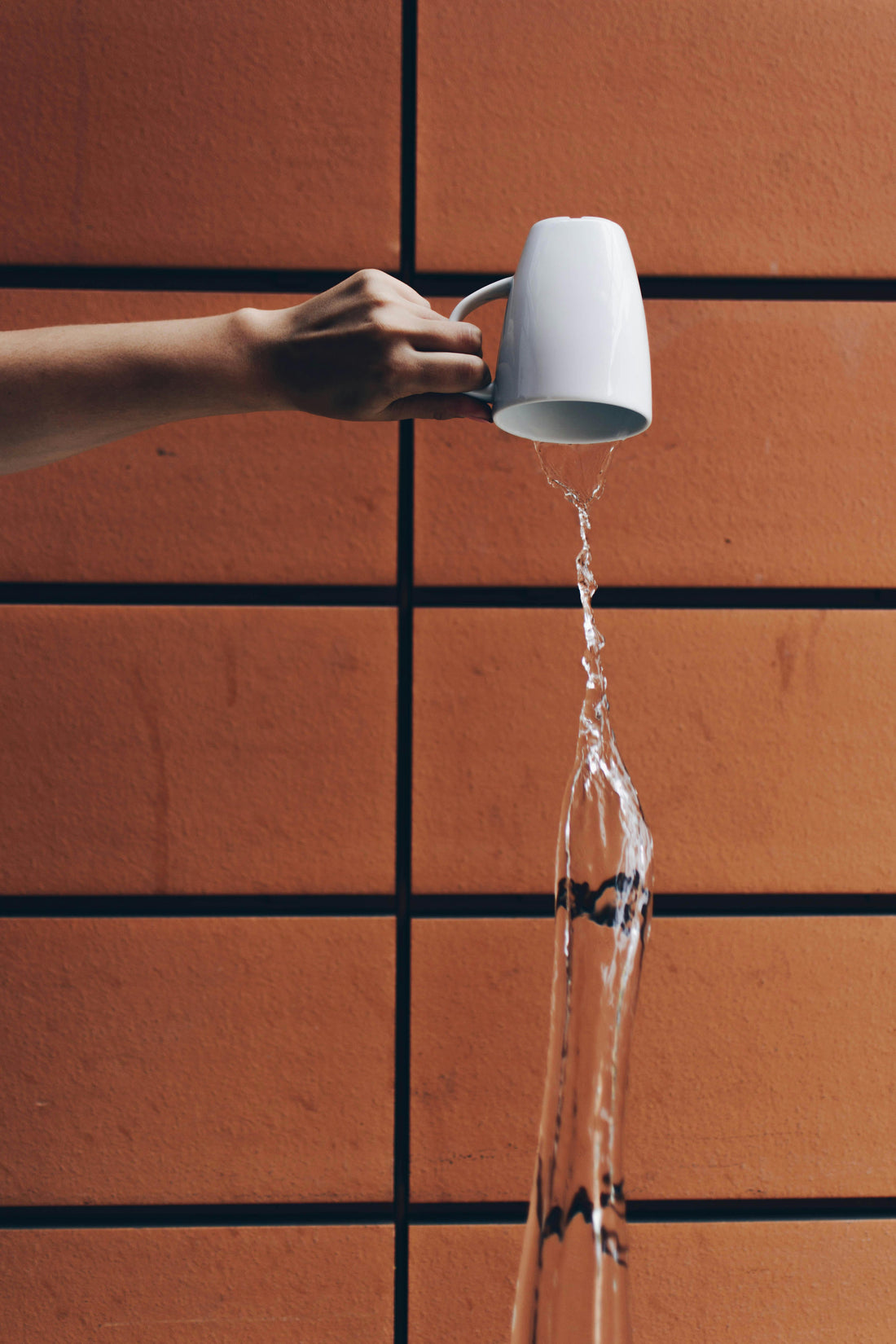
Brew Ratios Explained | How to Balance Coffee and Water for Perfect Flavour
Brew Ratios Explained: Finding Your Perfect Balance
Every great cup of coffee starts with a simple equation: coffee + water. That’s it.
But the ratio between the two is what turns a handful of grounds into something rich, balanced, and delicious or, if you get it wrong, something bitter, sour, or just plain boring.
Brew ratios are the backbone of every brewing method, from espresso to pour over. Once you understand them, you can tweak flavour like a pro; no fancy gear or guesswork required.
Let’s break down what brew ratios are, how to use them, and how to find your perfect balance.
1. What Is a Brew Ratio?
A brew ratio is simply the relationship between the amount of coffee you use and the amount of water you brew it with.
It’s usually written as 1:15, 1:16, or 1:2, depending on the method. The first number always represents coffee; the second represents water.
For example:
A 1:15 ratio means 1 gram of coffee for every 15 grams (or millilitres) of water.
A 1:2 ratio (common for espresso) means 1 gram of coffee to 2 grams of liquid espresso in the cup.
This small bit of math has a massive impact on flavour; controlling everything from strength and mouthfeel to clarity and sweetness.
2. Why Brew Ratios Matter
Think of a brew ratio like seasoning in cooking. Add too little salt, and food tastes flat. Add too much, and you overpower the dish.
Coffee works the same way. The brew ratio controls how much flavour the water extracts from your grounds which ultimately defines how your coffee tastes.
Too much water (higher ratio) → weak, watery, or under-extracted flavour.
Too little water (lower ratio) → strong, intense, and sometimes bitter taste.
The magic lies in balance; extracting just enough of the coffee’s soluble compounds to create harmony between acidity, sweetness, and bitterness.
3. The Golden Ratios (and What They Mean)
Different brewing methods call for different ratios. Here’s a simple guide to the most common ones:
| Brewing Method | Common Ratio | Flavour Profile | Notes |
|---|---|---|---|
| Espresso | 1:1.5 to 1:2.5 | Intense, syrupy, full-bodied | Adjust ratio to control strength and texture |
| AeroPress | 1:12 to 1:16 | Clean, versatile | Shorter ratios for espresso-style shots, longer for filter-style brews |
| Pour Over (V60/Chemex) | 1:15 to 1:17 | Balanced, bright | 1:15 for bolder flavour, 1:17 for lighter, tea-like cups |
| French Press | 1:15 to 1:16 | Heavy, rich | More immersion = more body |
| Cold Brew | 1:5 (concentrate) or 1:15 (ready-to-drink) | Smooth, low-acid | Concentrate is usually diluted before serving |
These are just starting points not strict rules. Once you find your preferred range, small tweaks can help you fine-tune flavour to your liking.
4. How Brew Ratio Affects Flavour
Every adjustment to your brew ratio changes how your coffee tastes:
Lower ratio (less water) → Stronger, heavier body, more intense flavour. Great for those who love espresso-like strength or a punchy French press.
Higher ratio (more water) → Lighter body, cleaner cup, more clarity. Ideal for delicate origins like Ethiopian or Kenyan beans where you want the fruit and floral notes to shine.
But brew ratio doesn’t exist in a vacuum; it interacts with grind size, water temperature, and brew time. For instance, using a finer grind will extract faster, so you might use a slightly higher ratio to avoid over-extraction.
Once you start experimenting, you’ll see how small adjustments can completely change your cup.
5. Measuring Your Brew: Why a Scale Helps
If you’ve ever wondered how cafés make every cup taste the same, the secret isn’t luck, it’s precision.
Using a simple digital scale helps you control your brew ratio accurately. Measuring by scoop is too inconsistent since grind density varies.
Here’s how to start:
- Weigh your coffee — for most pour overs, start with 20g of coffee.
- Multiply by your chosen ratio — if you’re using a 1:16 ratio, that’s 20g x 16 = 320g of water.
- Brew — pour in the water evenly over your coffee grounds (or however your method calls for).
That’s it. Once you’ve brewed this way a few times, it becomes second nature.
6. Finding Your Ideal Ratio
There’s no single “perfect” ratio, it depends on your taste and the coffee you’re using.
Here’s a simple way to dial in:
Start with 1:16. It’s a solid middle ground for most filter coffees.
Taste your cup.
- Too weak or sour? Try a lower ratio like 1:15 (less water).
- Too bitter or heavy? Try 1:17 (more water).
Adjust in small steps. Even a change of 0.5 can make a noticeable difference.
For espresso, you can experiment similarly:
Start with a 1:2 ratio (e.g. 18g in, 36g out).
Taste the shot and tweak:
- For more sweetness and clarity, try 1:2.5.
- For more punch and intensity, try 1:1.8.
The key is to change one variable at a time; that’s how you learn what your preferences really are.
7. Brew Ratio and Roast Level
Roast level also affects which ratio works best.
Light roasts: These beans are denser and harder to extract, so a lower ratio (like 1:15) can help intensify flavour.
Dark roasts: Softer and easier to extract, so a higher ratio (like 1:17) helps avoid bitterness.
Medium roasts: Somewhere in the sweet spot; 1:16 often works beautifully.
So, if you’re brewing Brewno’s Before 5AM Blend; a medium roast with a smooth, balanced character; a 1:16 pour over or 1:2 espresso is a great place to start.
8. Common Mistakes (and Easy Fixes)
Mistake 1: Ignoring the Ratio Altogether
Eyeballing your coffee might work once, but it won’t give you consistency. Use a scale, it’s a tiny effort for a huge upgrade.
Mistake 2: Not Adjusting for Grind
Fine grinds extract faster, coarse ones slower. If your brew tastes off, don’t just change the ratio; check your grind size too.
Mistake 3: Using the Same Ratio for All Coffees
Different origins, roast levels, and processing methods shine at different strengths. Treat each coffee like its own experiment.
Mistake 4: Forgetting Taste Is Personal
Ratios are guides, not gospel. The best ratio is the one that makes you say, yep, that’s the good stuff.
9. A Simple Starting Chart
| Roast Level | Brew Method | Recommended Ratio | Flavour Outcome |
|---|---|---|---|
| Light | Pour Over | 1:15 | Bright, complex, high clarity |
| Medium | Pour Over | 1:16 | Balanced sweetness and body |
| Dark | Pour Over | 1:17 | Smooth, round, lower acidity |
| Espresso (any roast) | Espresso | 1:2 | Rich and full-bodied |
| Cold Brew | Immersion | 1:15 | Smooth, sweet, low acid |
Use this as a launch pad; from there, tweak to taste.
10. Why Consistency Is Everything
Once you find a ratio you like, stick to it for a while. Consistency helps you notice what actually changes the flavour; whether it’s a different bean, water quality, or grind setting.
If you’re constantly guessing, you’ll never really know what worked and what didn’t. Brewing with intention, even just by tracking your ratio; turns “making coffee” into crafting coffee.
Final Sip
The beauty of brew ratios is that they strip coffee down to its essence: balance.
It’s not about being perfect or scientific; it’s about getting to know your coffee better, one cup at a time. Whether you like it strong and syrupy or light and tea-like, your ratio is the steering wheel that gets you there.
So grab a scale, do a little experimenting, and start brewing with purpose. Because when you dial in that sweet spot; that moment when everything just clicks, you’ll taste the difference immediately.
